A green salad can be a surprisingly easy meal to make, especially if you have leftover cooked meats in the fridge. There’s a simple formula to follow:
greens + veggies + proteins + dressing = yum
Let’s break this down into low FODMAP choices and portion sizes. All of the following portion recommendations are for a single portion, as reported by Monash University’s FODMAP app.
Salad Greens
Because most greens do contain some FODMAPS, it is important to make sure to not exceed recommended portions. For dinner salads, select greens that you can have in quantity such as Romaine or red leaf lettuce. You can also use greens in combination for taste or nutrition. For side salads there is more freedom to choose since you can use higher FODMAP greens in smaller portions. Feel free to use ready to eat salad greens to save time and effort.
The following types of lettuce are the lowest FODMAP choices. Up to 2 cups of the following should be tolerated.
- Romaine lettuce
- Red leaf lettuce
- Butter lettuce
- Bibb lettuce
- Arugula/Rocket
- Radicchio
Higher FODMAP greens that can be enjoyed in smaller portions include:
- Baby spinach (up to 1.5 cups)
- White cabbage ( up to 3/4 cup)
- Kale (up to 1/2 cup)
Low FODMAP Vegetables
Fresh vegetables add color, texture and nutrition to a salad. Slice them with a mandolin, chop them with a knife or use a peeler/grater. Unsure of how much to use? Go with whatever looks nice to you. I build all my salads by how they look.
- Carrot, peeled and sliced or grated (up to 1 medium carrot)
- Red bell pepper, sliced or chopped (up to 1/2 cup)
- Cherry tomatoes, halved or quartered (up to 3)
- Cucumber, sliced into rounds (up to 1/2 cup)
- Radish, sliced into rounds (up to 4 radishes)
- Scallions, sliced (green parts only)
- Black olives, whole or sliced (up to 15)
- Jicama, peeled and medium diced (up to 1/2 cup)
Proteins
Turn a salad into a satisfying meal by adding the protein of your choice. Meats and eggs are low FODMAP so use them in whatever quantities you like. I typically use between 4-6 oz portions of leftover meats I have already cooked. If you plan on cooking your protein freshly, be sure to let it stand long enough too cool or it will wilt your greens. Poached or grilled chicken or fish works well for salads.
- Marinated firm tofu (up to 1 cup), diced
- Hard boiled egg, cut into wedges
- Sautéed shrimp
- Salmon
- Hot/cold smoked salmon
- Chicken, sliced or diced
- Bacon (up to 2 strips)
- Ham, diced
- Steak, sliced
- Seasoned ground beef crumbles
- Hamburger steak, cut into strips
Cheese
Many cheeses are low FODMAP. Hard cheeses and aged cheeses contain less lactose than fresh dairy. Avoid fresh cheeses like cottage cheese or farmer cheese.
- Parmesan, shredded or shaved (up to 1.5oz)
- Cheddar, sliced, shredded or cubed (up to 1.5oz)
- Swiss, sliced or cubed (up to 1.5oz)
- Colby, sliced or cubed (up to 1.5oz)
- Monterey Jack, sliced or cubed (up to 1.5oz)
- Havarti, sliced or cubed (up to 1.5oz)
- Mexican shredded cheese blend (up to 1.5oz)
- Mozzarella, shredded (up to 1.5 oz)
- Blue cheese crumbles (up to 1.5oz)
- Feta crumbles (up to 3 tbsp)
- Chèvre crumbles (up to 1 tbsp)
Putting It All Together – A Garden Salad for One
Once you’ve made your salad ingredient selections, it’s time for the dressing. Salad dressing is pretty easy to make and tastes infinitely better than bottled. Allow 2-3 ounces of dressing per meal salad. The 2 dressing recipes listed below are single ~2-ounce portions. Pick the one you prefer. Make sure to any prepared ingredients like ketchup and sweet relish do not contain high FODMAP ingredients like onion or garlic.
Garden Salad ingredients
- Up to 2 cups Romaine lettuce, washed, dried and chopped
- Hard boiled egg, cut into wedges
- 1 medium carrot, shredded or sliced
- 3 cherry tomatoes, halved
- 6-8 cucumber slices
- 1 radish, thinly sliced (optional)
- 4 black olives (optional)
- Handful shredded cheese
Basic Low FODMAP Vinaigrette Ingredients
- 2 tbsp garlic-infused olive oil
- 2 tsp red wine vinegar
- 1/2 tsp Dijon mustard
- a pinch of dried oregano or thyme
- a pinch of sea salt
- a few cracks of black pepper
Easy Thousand Island Dressing Ingredients
- 1/4 cup real mayonnaise
- 1 tsp ketchup
- 1 tsp sweet relish
- 1/4 tsp yellow mustard
Instructions
- Select the dressing you wish to make. Combine the ingredients for that dressing in a small bowl and stir until will mixed.
- Assemble the salad in a bowl. Pour the dressing over the salad. Serve immediately.
Makes 1 serving.
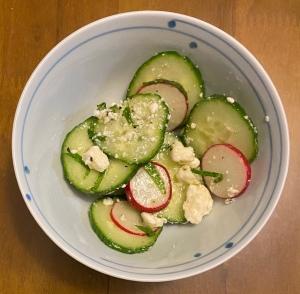

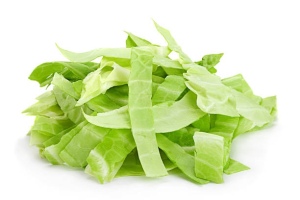
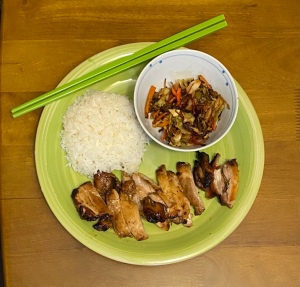
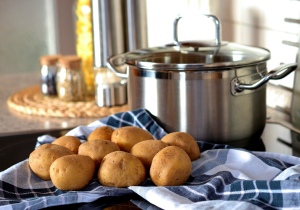
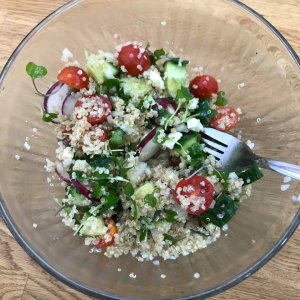
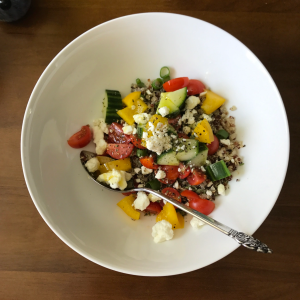
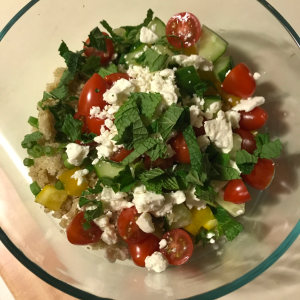





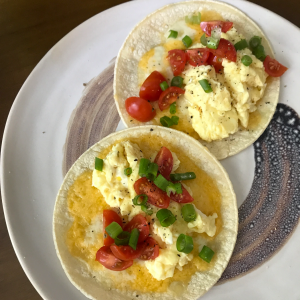
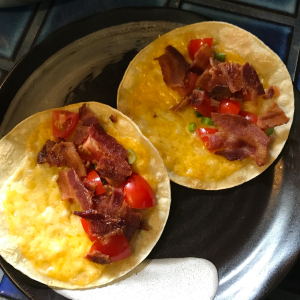
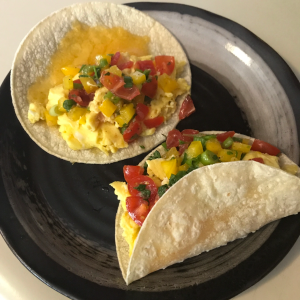

You must be logged in to post a comment.